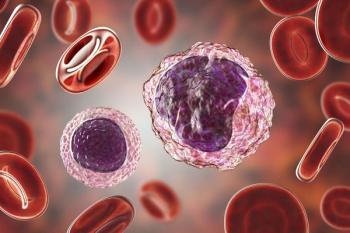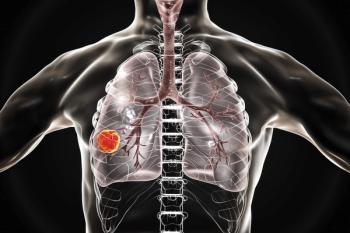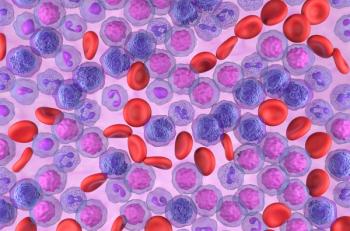
Oncology NEWS International
- Oncology NEWS International Vol 10 No 9
- Volume 10
- Issue 9
Anticonvulsants Can Alter Irinotecan Metabolism
SAN ANTONIO-Enzyme-inducing antiepileptic drugs (EIAEDs) can significantly alter the metabolism of irinotecan (Camptosar) and should be taken into consideration when treating patients for brain tumors, according to John G. Kuhn, PharmD. Dr. Kuhn is professor of Pharmacology and Medicine at the University of Texas Health Sciences Center in San Antonio, Texas. He discussed data on irinotecan pharmacokinetics from an ongoing North American Brain Tumor Consortium (NABTC) phase I study.
SAN ANTONIOEnzyme-inducing antiepileptic drugs (EIAEDs) can significantly alter the metabolism of irinotecan (Camptosar) and should be taken into consideration when treating patients for brain tumors, according to John G. Kuhn, PharmD. Dr. Kuhn is professor of Pharmacology and Medicine at the University of Texas Health Sciences Center in San Antonio, Texas. He discussed data on irinotecan pharmacokinetics from an ongoing North American Brain Tumor Consortium (NABTC) phase I study.
Irinotecan is metabolized via CYP3A4 to less active oxidative metabolites and bioactivated in the liver and intestine by carboxylesterases to the active SN-38 metabolite. Dr. Kuhn said the NABTC study was designed to determine the maximum tolerated dose of irinotecan given every 3 weeks to patients who were taking EIAEDs and to patients who were not taking such drugs. A phase II study will determine efficacy in progressive or recurrent primary gliomas.
Inducing and Noninducing Drugs Are Tested
The EIAEDs include phenytoin (Dilantin), phenobarbital (Donnatal), and carbamazepine (Tegretol). The noninducing AEDs include gabapentin (Neurontin), valproic acid (Depakene), levetiracetam (Keppra), topiramate (Topamax), lamotrigine (Lamictal), zonisamide (Zonegran), and tiagabine (Gabitril). Patients not on EIAEDs (n = 34, 22 evaluable) were treated with irinotecan 350 mg/m² IV over 90 minutes with no dose escalations. Patients on EIAEDs (n = 48, 34 evaluable) were treated with irinotecan at 350 mg/m² with dose escalations in 50 mg/m² increments.
"In the EIAEDs group, the dose-limiting toxicity was grade 3 diarrhea at the 800 mg/m² dose level. The phase II dose will be 750 mg/m² every 3 weeks. Clearance of irinotecan was about twofold higher in patients taking these drugs, and there was a dramatic decrease in the level of the active metabolite SN-38," Dr. Kuhn said. "Non-EIAEDs with or without steroids had little effect on irinotecan metabolism and excretion. Gabapentin, although not an enzyme-inducing agent, had a greater than expected effect on irinotecan clearance."
Articles in this issue
over 24 years ago
Avon Launches ‘Kiss Goodbye to Breast Cancer’ Campaignover 24 years ago
Occult Tumor Cells in Marrow Predict Breast Cancer Survivalover 24 years ago
No Long-Term Advantage for Complete Response to Neoadjuvant Chemo/RTover 24 years ago
New Agents Tested with 5-FU in Rectal Cancerover 24 years ago
Thalidomide Appears Effective in Early-Stage Myelomaover 24 years ago
New ‘Goals for Pain Relief’ Scale Proves Reliable in Pilot Studyover 24 years ago
GVAX Autologous Vaccine Shows Activity in Lung CancerNewsletter
Stay up to date on recent advances in the multidisciplinary approach to cancer.


















































































